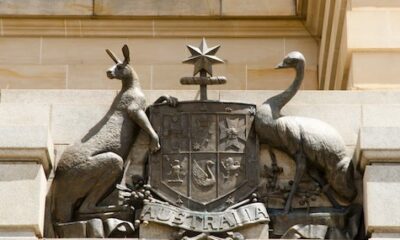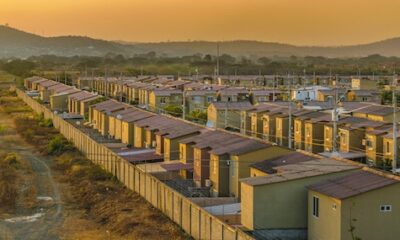Aged care report goes to the heart of Australia’s tax debate
The Aged Care Taskforce was asked to report on how to fund aged care around the country. In so doing, it took a side in Australia’s national tax ‘tragedy.’

.
The Australian government commissioned an Aged Care Taskforce to report on how best to fund aged care. It disagreed with the recommendations of the Royal Commission into Aged Care, finding that a personal income tax levy would unfairly burden working-aged taxpayers.
One thing is clear: the aged care sector is in crisis. Costs are skyrocketing as the working-age population (whose tax dollars are needed to fund the system) is dwindling in proportion to the number of older Australians. There are three trends at play here.
Firstly, there is the demographic issue. In 1970, for every 65-year-old plus Australian, there were 7.5 more working-aged ones. In 2014, the ratio was 1:5, and by 2050 it will be 1:2.7, according to the AHRC.
The number of octogenarians in Australia will triple over the next 40 years.
Secondly, aged care costs are growing as a percentage of our GDP. In 2021–22, it cost 1.1 per cent of the national GDP, by 2062–63 it will cost 2.5 per cent.
By 2033–34, the PBO estimated the costs of aged care will increase by more than 82 per cent, or $29 billion.
Thirdly, the wealth gap between older Australians and younger ones is growing. In 2003–04, people aged 55 years and over owned 48 per cent of Australian household wealth.
By 2015–16 the figure had climbed to 56 per cent. Grattan Institute researchers dubbed this the “tale of two Australias.”
Given the government contributes approximately 75 per cent of residential aged care funding and nearly all (95 per cent) of home care funding, people are asking whether older Australians – who are more populous, and wealthier – should contribute more.
If you are the Aged Care Taskforce, you are answering in the affirmative.
The Royal Commission into Aged Care recommended introducing a levy to fund better-aged care services. Both commissioners proposed their models for aged care income taxes.
Last week, the government released the final report of the Aged Care Taskforce which disagreed, claiming additional taxes would unfairly burden younger taxpayers.
“There are substantial intergenerational equity issues in asking the working age population, which becoming proportionally smaller, to pay for these services,” said the report.
“Superannuation has been designed to support people to grow their wealth and fund the costs associated with retirement including aged care.”
More, the report suggested the government is paying an outsized amount in funding aged care and that older Australians should help foot the bill.
Currently, the government contributes around 75 per cent of residential aged care funding and nearly all (95 per cent) of home care funding.
According to the Taskforce, this is neither “optimal or fair.”
“Given the increasing wealth of many older people and the declining working age (that is tax paying) population, there is a strong case to increase participant co-contributions for those with the means to contribute,” it said.
“While the Taskforce supports government maintaining its central role in funding aged care, it does not support a specific increase to tax rates to fund future rises to aged care funding,” it said.
“Government funding will focus on ensuring all older people can access the care they need, while co-contributions will be required for the things people have typically paid for their whole lives.”
The Taskforce said this is not to derogate from the need for the government to support older Australians with limited means.
Darrell Price, national head of health and aged care at Grant Thornton, said the report “should be commended.”
He added, however, that the report failed to address how the proposed adjustments will “play out in the future.”
While the report appears to have been largely well-received, it raised issues central to Australia’s ongoing tax debate.
Questions around whether Australia is too dependent on personal income taxes as a share of public revenue and whether the system is geared to disadvantage younger Australians are ongoing.
Just over a month ago, these issues were aired in a National Press Club debate between Wentworth MP Allegra Spender and Australia Institute executive Director Richard Denniss.
Against the context of Stage Three tax cuts, the former claimed the government needed to diversify its tax portfolio. Denniss nominally agreed but maintained national personal income taxes were low by national standards.
Only a week after the debate, Denniss’ own Australia Institute shared research from Greg Jericho and Jack Thrower, which claimed Australians pay more in HECS than gas companies do PRRT.
“Our tax system needs massive reform. For too long governments have let gas companies, whose product greatly contributes to increased greenhouse gas emissions that cause climate change, make out like bandits,” said the article.
In a similar vein, Spender told the Press Club of an emerging “national tragedy” in which students are being snowed under by HECS debt while being priced out of the property market.
“Sydney, where I’m from, has the second-least affordable housing in the world,” she said.
This touches on the second issue raised by the aged care review – the intergenerational wealth divide. Perhaps the clearest distillation of this divide is evidenced by the lightning rod that is negative gearing.
As younger Australians face the prospect of becoming life-long renters (despite the growing costs of rent), some 2.25 million others are offsetting their income tax bills with investment properties that price out newcomers.
That said, some research suggests negative gearing is becoming less attractive for many Australians. A study from LongView and PEXA found that 60 per cent of property investors would be better served by pouring their money into super funds.
The aged care sector is not representative, but many will be taking the report as a sign that their tax concerns are being heard.
18 March 2024
Nick Wilson
accountingtimes.com.au
Sofie Korac is an Authorised Representative (No. 400164) of Prudentia Financial Planning Pty Ltd, AFSL 544118 and a member of the Association of Financial Advisers.
Financial Advice Sydney and the North Shore Office based in Gordon NSW







